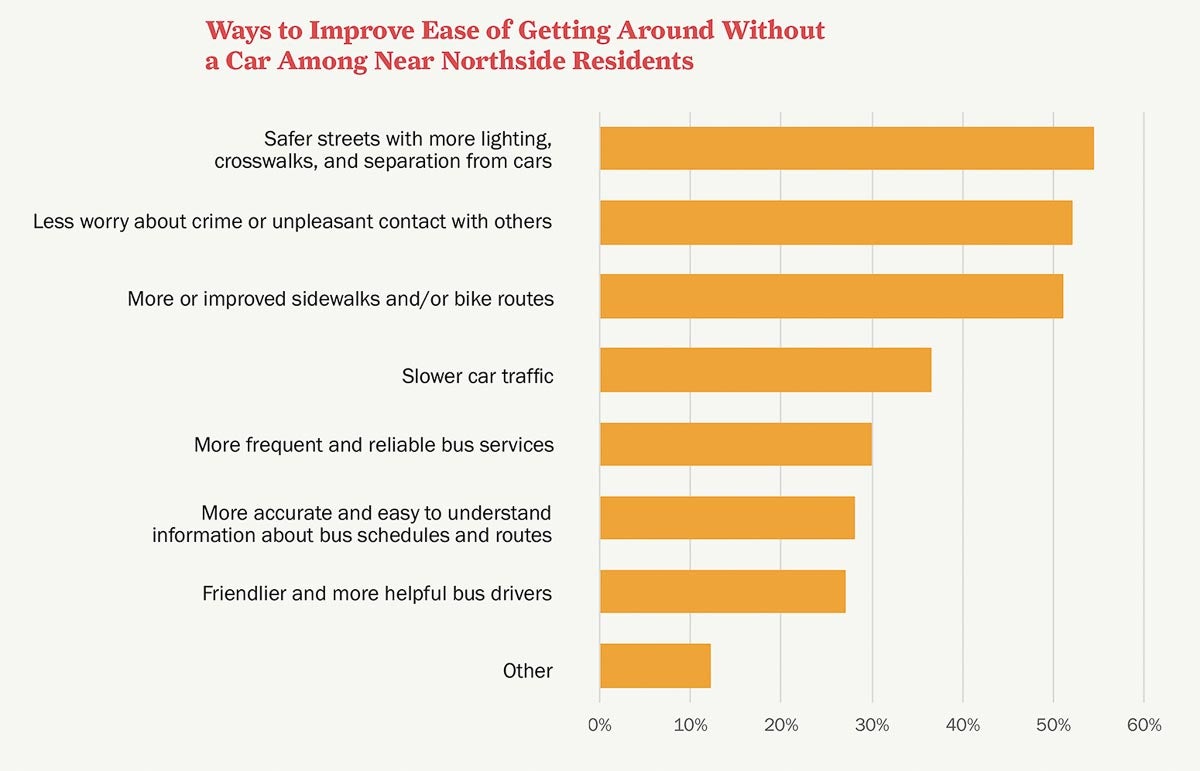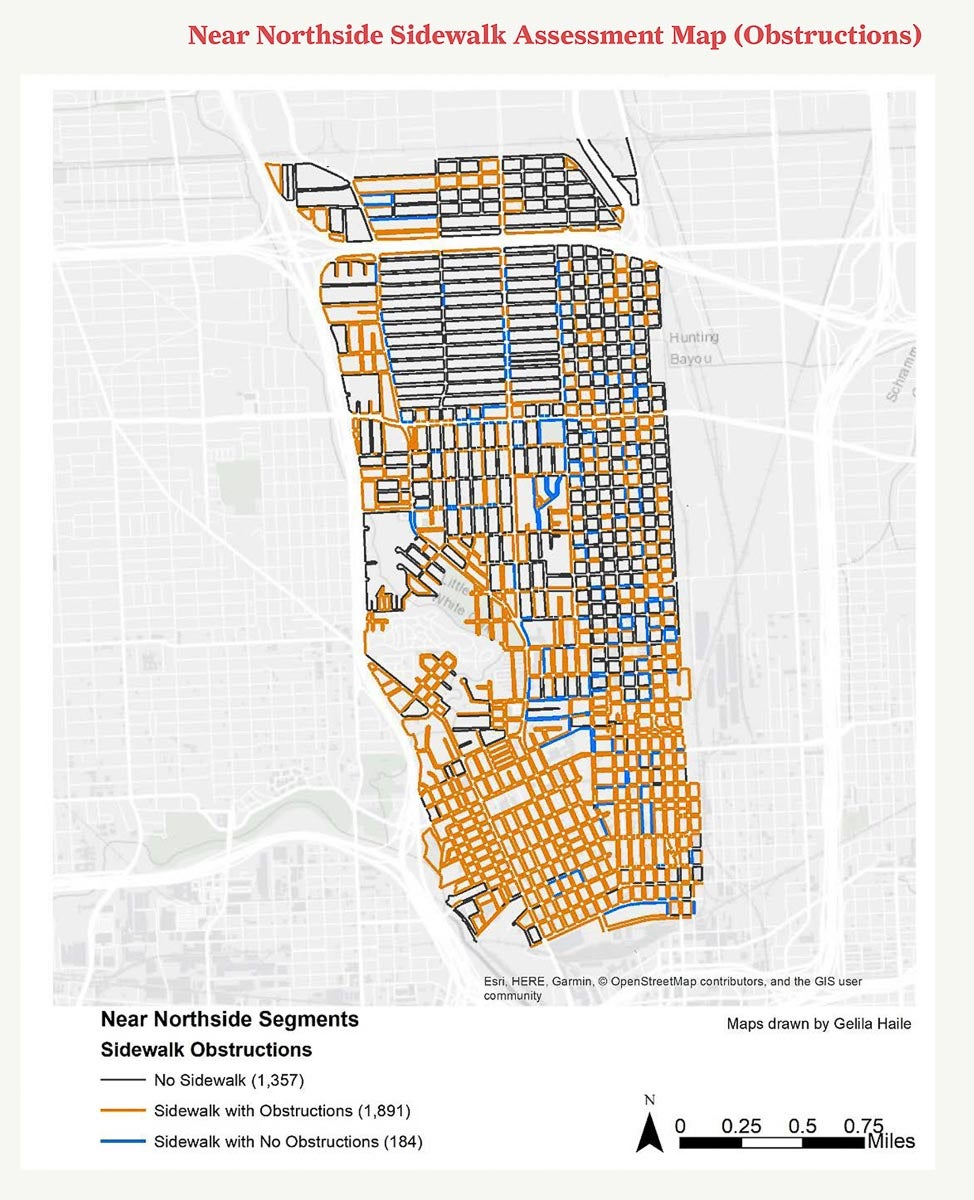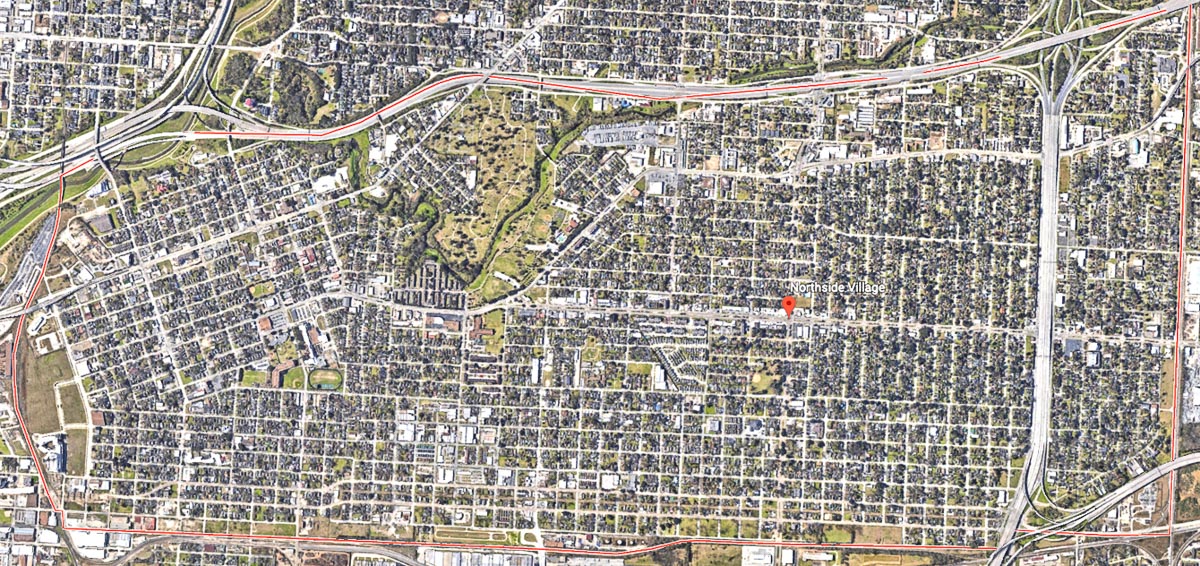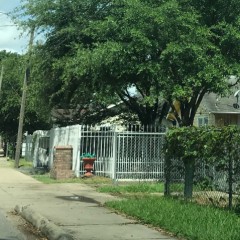There’s a lot of great work happening to improve streets in the Near Northside of Houston. Just last week the Kinder Institute highlighted the efforts of groups like Safe Walk Home and the Houston Department of Transformation, each of which are working to address community concerns about safety on neighborhood streets. Local organizations like Avenue and staff and families from local schools have partnered on projects that push for improvements along routes to schools in the area. These admirable efforts are working to address big issues in the community, according to two Kinder Institute reports released today.
The two new reports — “Neighborhood Voices: Using Community Engagement to Address Transportation, Infrastructure and Safety Concerns in Near Northside, Houston” and “Near Northside: Safe Streets, Safe Communities” — build on previous Kinder work examining near-miss experiences for bicyclists and a similar review of street safety in Gulfton. In each of these efforts, the Kinder Institute assessed elements of the built environment as well as residents’ attitudes and perceptions about safety in their community. Information for each report on the Near Northside was collected by resident volunteers and partners such as the University of Houston, LINK Houston, BakerRipley and other local organizations.
Nearly 24% of the 304 Near Northside residents surveyed reported they walk, ride a bike or take transit to most destinations and that they rarely drive — a rate nearly three times higher than the city’s average. Those residents, however, reported a range of issues that make walking or biking more difficult or uncomfortable — from concerns about crime to fears of being hit by a vehicle. Interestingly, the respondents who said they won’t walk in the neighborhood echoed many of those concerns. Both groups made it clear that significant investments in improved infrastructure, transit and public safety would be a boon to opening the streets to users of all kinds.

Source: Neighborhood Voices: Using Community Engagement to Address Transportation, Infrastructure and Safety Concerns in Near Northside, Houston
The residents’ attitudes also meshed with the findings of the infrastructure assessment. The full sidewalk assessment found that nearly 40% of Near Northside streets did not have sidewalks. Perhaps even more problematic, of the 60% of neighborhood streets that have sidewalks, nearly 92% of those street segments were found to have one or more obstacle such as overgrown vegetation, broken or incomplete sidewalks, or a parked car blocking the path. Universal, safe access to sidewalks was similarly an issue, with just over 30% of intersections having no ramps to enable people in wheelchairs or pushing strollers easy access to sidewalks.

Source: Near Northside: Safe Streets, Safe Communities
The Near Northside is one of the initial Complete Communities pilot areas set up by the City of Houston. The community’s action plan made clear that access to education, employment and health care were critical goals for residents. Pedestrian safety was also a top priority and is a thread that can help address other goals as well. Creating safer streets with greater investments in transit and other modes of mobility can enable residents to use multiple modes to reach their destinations safely and conveniently. This issue was highlighted in each of the five pilot Complete Community neighborhoods and certainly is a challenge common to many areas beyond these neighborhoods.
The Kinder Institute’s goal in sharing this community-level street-safety data is to support localized efforts by identifying particularly problematic areas, highlighting patterns and providing evidence that can shape future investments and policies. The Near Northside audit information will be available in the community’s profile on our community data dashboard, Houston Community Data Connections, in the weeks to come.


